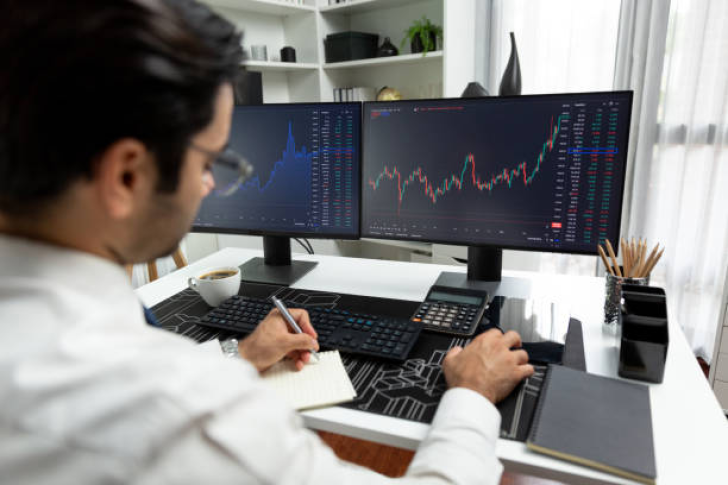The foreign exchange (forex) market remains the largest and most liquid financial market in the world, with daily turnover exceeding $7.5 trillion according to the BIS Triennial Survey. In 2025, the trading environment has become more data-rich, more interconnected, and more competitive.
While macroeconomic fundamentals still drive long-term currency valuations, AI-powered analytics and execution tools now shape the way traders interpret signals and manage positions. The winning edge increasingly lies in combining deep economic insight with precision AI execution.
The Evolving Forex Landscape in 2025
A modern forex trading guide must reflect how structural changes in currency markets over the past five years have shaped both retail and institutional trading:
- Increased Market Fragmentation: Liquidity is now distributed across more electronic platforms, with AI routing orders to the best execution venues.
- Faster Information Cycles: Macroeconomic releases, political events, and central bank statements are being priced within seconds, making speed as important as strategy.
- Geopolitical Influence: Currency volatility spikes more often around trade disputes, sanctions, and regional instability, demanding nimble adjustments.
- Rise of AI-Assisted Trading: More traders now use AI not just for signal generation but also for sentiment analysis, position sizing, and adaptive risk control.
These shifts mean that while traditional forex knowledge still matters, traders must now integrate AI tools to remain competitive.
Reading Key Data for Smarter Decisions
Even with advanced algorithms, human oversight begins with interpreting the core economic drivers:
- Interest Rate Differentials: Still the most consistent long-term driver of currency trends. In 2025, AI tools can scrape central bank language to anticipate rate changes before they’re officially announced.
- Inflation Metrics: AI sentiment trackers now interpret CPI releases in real-time, factoring in not only headline numbers but also central bank reaction likelihood.
- Trade Balances: Persistent surpluses or deficits influence currency supply and demand; AI models now pair this with commodity flow data for resource-driven currencies.
- Employment Data: Labor market strength impacts rate policy. AI models detect subtle shifts in wage growth, participation rates, and sectoral hiring patterns.
Transition point: These data points are timeless — but the real advantage in 2025 lies in how quickly and accurately they can be processed.
How AI Transforms Forex Strategy
AI’s role in forex trading extends beyond generating buy/sell signals. It now enables traders to operate at scale and speed without sacrificing accuracy.
Key AI Enhancements in 2025:
- Real-Time Sentiment Analysis: Scans thousands of news headlines, tweets, and policy statements to measure market mood. Assigns probability scores to possible currency moves before human analysts react.
- Adaptive Technical Models: Continuously recalibrate indicators like RSI, MACD, and Bollinger Bands based on changing volatility regimes. Prevents “stale” signal reliance during fast market shifts.
- Event-Driven Execution: Pre-programmed to enter or exit trades within milliseconds of data release — reducing slippage. Often paired with AI-based stop adjustments.
- Portfolio-Level Risk Management: AI tools now manage correlated positions across multiple currency pairs, automatically hedging exposures.
Building a Smart AI-Assisted Forex Workflow
For traders integrating AI into their process, success depends on designing a workflow where technology amplifies human judgment.
A practical model for 2025:
- Step 1 – Macro Screening: Use AI to filter which currencies are likely to trend based on rate outlook, macro surprises, and sentiment shifts.
- Step 2 – Technical Confirmation: Apply adaptive chart patterns and volatility analysis to fine-tune entries.
- Step 3 – Risk Alignment: Set AI-calculated position sizes based on both volatility and portfolio exposure.
- Step 4 – Automated Execution: Allow AI systems to handle speed-sensitive entries/exits, but maintain manual override authority.
- Step 5 – Continuous Review: Run end-of-day AI summaries highlighting deviations from expected outcomes.
Adapting to Volatility and Regime Changes
The forex market of 2025 demands agility. Static strategies underperform when global conditions shift unexpectedly — and AI excels at regime detection.
- Example: When U.S. Treasury yields spike unexpectedly, AI models can quickly pivot from risk-on trades (e.g., AUD/JPY long) to defensive positions (e.g., USD/CHF long).
- Volatility Filters: AI alerts traders to widen stops and reduce leverage ahead of high-impact events.
- Correlation Mapping: Identifies when traditional currency correlations break down, such as during commodity supply shocks.
Transition point: Regime awareness allows traders to survive “black swan” moments that can wipe out portfolios relying solely on past patterns.
Balancing Automation and Human Oversight
One of the biggest challenges in AI-enhanced forex trading is avoiding over-automation.
AI is unparalleled at:
- Scanning huge datasets instantly.
- Detecting micro-patterns invisible to the human eye.
- Executing with precision under time pressure.
However, human traders remain critical for:
- Understanding context behind policy shifts.
- Weighing political risks and diplomatic subtleties.
- Deciding when to override AI in unusual market conditions.
The most successful 2025 traders view AI as a co-pilot, not a replacement.
Case Study: AI in Action During an ECB Surprise
In June 2025, the European Central Bank unexpectedly raised rates by 50 bps instead of the widely expected 25 bps.
- Before the Announcement: AI sentiment tools detected hawkish language in ECB member speeches, adjusting EUR long positions upward.
- During the Release: Event-driven algorithms bought EUR/USD within 200 milliseconds of the announcement, avoiding the 0.5% slippage most manual traders faced.
- After the Move: Volatility filters triggered partial profit-taking before the retracement, locking in gains.
This example illustrates the synergy of human interpretation and AI speed.
Final Takeaway
Forex trading in 2025 rewards those who combine classic currency knowledge with AI-driven agility. Macroeconomic understanding still sets the stage, but the execution, risk control, and adaptability now happen at machine speed.
The traders who thrive will be the ones who:
- Treat AI as an analytical partner.
- Stay macro-aware while reacting in milliseconds.
Adjust strategies as regimes shift.
 Editorial staff
Editorial staff

 Editorial staff
Editorial staff


